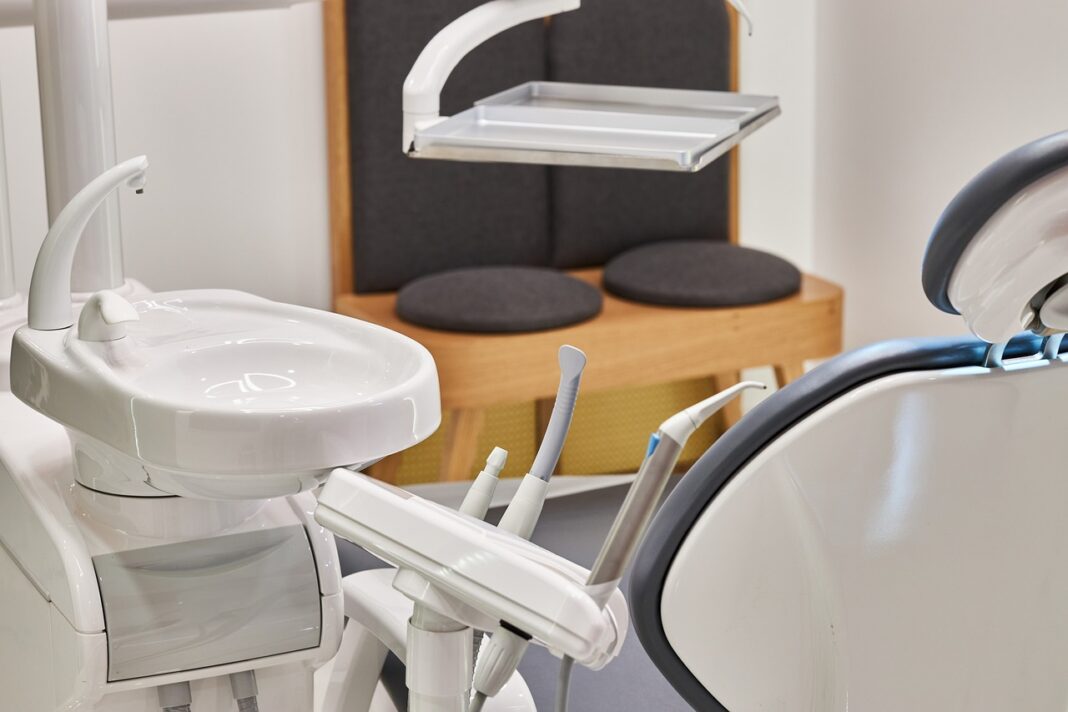Many individuals recognize the significance of regular brushing and flossing for cavity prevention. Yet, did you realize that oral health can provide valuable insights into your overall well-being?
Your oral health acts as an essential guide to your general physical condition. It often shows indications of systemic ailments within the mouth before they are clinically identified. Evidence from several studies points to a link between periodontal disease and systemic diseases such as diabetes, heart disease, gastrointestinal disorders, endocrine problems, blood-related diseases, cancer, obesity, osteoporosis, and neurological disorders which often can be discovered during a routine visit to the dentist.
Systemic Diseases Linked to Oral Health
A study conducted by Atrium Health’s Carolinas Medical Center in the United States reveals that systemic disorders can have significant effects on the oral cavity and its various components, including the gums, teeth, and periodontium, in diverse manners. These disorders can affect the growth of periodontitis, affecting the well-being of the tissues that provide support to the teeth, even in the absence of inflammation caused by dental plaque. Consequently, they can increase the rate and severity of periodontitis, which can result in a slow breakdown of the tissues that support the teeth (Jepsen et al. 2018).
Diabetes
Diabetes is a major contributing factor to periodontitis, and there is a bi-directional relationship between periodontitis and diabetes. The duration of diabetes, regardless of the specific diabetes type, influences the severity of periodontitis development (Lalla and Papapanou 2011). People with diabetes experience inflammation, which increases the injuring processes that break down periodontal tissue.
Likewise, individuals suffering from periodontitis encounter a decline in their capacity to maintain blood glucose levels as a result of insufficient metabolic regulation. Hence, periodontitis enhances the likelihood of diabetic complications.
Hypertension
In most cases hypertension is treated non-specifically, resulting in a large number of minor side effects. A 2019 study conducted by the University of Medicine and Pharmacy in Romania (Javot et al. 2011) found that people with hypertension have oral symptoms that are directly linked to high systolic and diastolic blood pressures. Gingival bleeding is one of the most common conditions among hypertensive patients. A research led by Kumar, showed that antihypertensive medications may cause side effects which raises the chance of developing tooth decay (Kumar et al. 2012).
Some common oral conditions in hypertensive patients are:
- xerostomia (dry mouth),
- gingival overgrowth,
- salivary gland swelling or pain,
- lichenoid drug reactions,
- erythema multiforme,
- taste sense alteration, and
- paresthesia
Furthermore, insufficient oral health can have an adverse effect on the control of blood pressure, potentially leading to gum bleeding and periodontitis.
Heart Disorders
Patients with heart diseases, such as atherosclerosis, myocardial infarction (MI), and rheumatic heart disease (RHD), have a higher chance of developing periodontal diseases.
From 14% to 67.4% of people taking cardiovascular medication develop oral side effects. For instance, Amlodipine and nifedipine gingival hyperplasia or nodules affect all areas of the marginal gingiva. Also, Aspirin, statins, and diuretics can cause abnormalities in taste perception.
Besides, Captopril and other angiotensin-converting agents have been associated with the development of lichen planus, as well as causing a “burning mouth” sensation and ageusia, according to research conducted by Farzin et al. 2016.
Craniofacial pain is observed too, in approximately 4% of individuals with angina due to the mixing of cardiac sensory inputs into the trigeminal nerve, which is found in the teeth and jaw, as described (Ratheesh et al. 2015).
Gastrointestinal Disorders
The oral cavity can display symptoms of systemic gastrointestinal disorders, such as those observed in inflammatory bowel disease. It can result in erythema and ulcers, usually found on the palate and uvula. Gingivitis, periodontitis, and dental erosion resulting in tooth sensitivity and/or pulpitis are symptoms of gastroesophageal reflux disease (GERD), as research published in 2020 pointed out. (Napeñas et al. 2020).
Patients with GERD commonly experience various oral complaints such as: - excessive salivation (sialorrhea),
- dry mouth (xerostomia),
- burning sensation,
- greater sensitivity of the tongue,
- bad breath (halitosis),
- feeling of a lump in the throat (Globus sensation),
- altered taste (dysgeusia),
- painful swallowing (odynophagia), and
- increased sensitivity to hot or cold substances on the teeth (dental thermal sensitivity).
Chronic Kidney Disorder
People with long-standing kidney disease often experience a higher prevalence of oral lesions and conditions due to the systemic effects of the disease. The main cause is the reduced glomerular filtration rate, which impairs the body’s ability to filter out toxins and maintain proper fluid balance. This can result in a buildup of waste products and electrolyte imbalances, contributing to oral manifestations such as: - abnormal lip pigmentation,
- halitosis (bad breath),
- periodontitis (gum disease), and
- candidiasis-like lesions (fungal infections in the mouth).
Anemia
Patients with Anemina may experience: - tongue soreness
- burning sensation or tingling
- loss of papillation
- ulcerations.
Iron deficiency anemia may show various oral symptoms, such as: - dysgeusia (alteration in taste perception),
- ageusia (complete loss of taste), and
- angular cheilitis (inflammation and cracking of the corners of the mouth).
Vitamin deficiency
Some deficiencies in Vitamins can affect oral health. Vitamin A (Retinol) and Vitamin E Deficiency increased periodontal disease and tooth loss. Vitamin B Deficiency produces a smooth, atrophic tongue (glossitis), which sometimes can cause pain or burning (glossodynia), and lips that crack and split (cheilitis), particularly in the corners of the mouth (angular cheilitis). Vitamin C (Ascorbic Acid) Deficiency generates spontaneous bleeding from the gingiva, mucosal ulcers, periodontal disease, and loss of mobility of teeth.
Obesity
A 2021 study conducted by the Medical University of Warsaw, Poland unveiled that obese patients show a tendency for greater plaque accumulation and periodontitis symptoms, which are characterized by inflammation of the gingival and periodontal tissues. Due to their increased consumption of sweets, fats, and dairy products, these patients have poorer oral hygiene and more advanced inflammatory changes in the periodontal tissues (Deszczyńska et al. 2021).
Mental health diseases (stress, depression)
Tooth decay is common among patients due to a lack of dental care as researchers found.(Vasiliou et al. 2016). Adverse effects of antidepressant medication or depression itself are: - Dry mouth
- Parotid swelling,
- biochemical abnormalities in saliva, and
- dental destruction (perimolysis)
- bruxism, or teeth grinding
Moreover, Stress can lead to various negative effects due to bruxism, including:
-thinning of tooth enamel,
-loss of fillings,
-increased susceptibility to tooth decay, and
-fractured or split teeth.
-Patient may clench the muscles of their jaw, resulting in jaw pain, tension, or tenderness.
Pregnancy
Pregnancy is associated with hormonal changes, including increased levels of estrogen and progesterone, which can lead to various physiological changes in the body, including the gums. Pregnancy can cause:
-gingivitis
-redness, swollen, and tender gums
-bleeding during brushing or flossing.
If left untreated, it can progress to more severe periodontal disease, affecting the tissues and bone supporting the teeth. Research suggests that pregnant women with periodontal disease may have an increased risk of certain obstetric complications, such as preterm birth or low birth weight.
HIV/AIDS (Human Immunodeficiency Virus/Acquired Immunodeficiency Syndrome)
Individuals living with HIV/AIDS are more susceptible to various oral manifestations, including:
-Oral Thrush (Candidiasis)
-oral ulcers,
-aphthous ulcers (canker sores),
-hairy leukoplakia
-gingivitis
-periodontitis
-swollen, bleeding gums,
-persistent bad breath,
-loose teeth
-dry mouth (xerostomia)
-Human papillomavirus (HPV) infection
A multidisciplinary approach involving dental professionals, physicians, infectious disease specialists, and other healthcare providers is essential for providing complete treatment and improving patient outcomes due to the complex nature of HIV/AIDS and its effects on different body systems.
Alcoholic liver disease
Sialadenosis is a condition that causes painless swelling of the parotid glands on both sides of the face. This condition is commonly seen in individuals with alcoholic liver disease and alcoholic cirrhosis.
Smocking
Smoking significantly harms the tissues that support the teeth, thus raising your risk of developing periodontitis. Tobacco use can cause a variety of oral changes, ranging from abnormalities in soft tissue to potentially fatal oral cancer. Smokers’ melanosis refers to the heightened pigmentation or darkening of tissues caused by irritation from tobacco smoke. Nicotinic stomatitis is characterized by the presence of white patches on the hard palate, along with multiple small raised areas that have red centers scattered throughout the palate.
The minor salivary glands become irritated and their duct openings become inflamed due to the heat generated by tobacco products.
Heightened susceptibility to developing cancer in the tonsils, posterior mouth, and lungs. Regionalised gingival recession and the visible dentition. Black Hairy Tongue occurs when there is an excessive growth of the regular bumps on the tongue or a reduced rate of their removal. Regular occurrence of malodorous
Conclusion
These are just a few examples, but they illustrate the interconnectedness of oral health with overall health and well-being. Regular dental check-ups allow for early detection and treatment of oral health issues, which can prevent them from progressing into more serious problems. It is vital for everyone, especially those with systemic conditions, to maintain good oral hygiene and attend regular dental check-ups. Individuals can prevent oral health complications and reduce the impact of systemic conditions on their overall well-being by focusing on oral health. Optimal oral health in individuals with systemic conditions can help in better management of their underlying health conditions. Individuals may achieve better overall health outcomes and quality of life by reducing oral infections and inflammation.
References
Deszczyńska, Katarzyna, Renata Górska, and Anna Haładyj. 2021. “Clinical Condition of the Oral Cavity in Overweight and Obese Patients.” Dental and Medical Problems 58 (2): 147–54. DOI: 10.17219/dmp/127873
Farzin, M., R. Derafshi, J. Ghapanchi, Ali Zarin Kafsh, and M. Rezaiee. 2016. “Oral Manifestations of Hypertension and Rheumatic Heart Disease : A Cross Sectional Study in Elderly Patients.” https://ajmpr.science-
line.com/attachments/article/39/Asian%20J.%20Med.%20Pharm.%20Res.%206(2)%2009-13,%202016.pdf.
Javot, L., J. Scala-Bertola, N. Petitpain, P. Tréchot, P. Péré, and P. Gillet. 2011. “Rheumatology-50.5.Letters 989..999.” http://www.rjor.ro/wp-content/uploads/2019/09/ORAL-MANIFESTATIONS-LINKED-TO-CARDIOVASCULAR-PATHOLOGY-OR-MEDICATION.pdf.
Jepsen, Søren, Jack G. Caton, Jasim M. Albandar, Nabil F. Bissada, Philippe Bouchard, Pierpaolo Cortellini, Korkud Demirel, et al. 2018. “Periodontal Manifestations of Systemic Diseases and Developmental and Acquired Conditions: Consensus Report of Workgroup 3 of the 2017 World Workshop on the Classification of Periodontal and Peri-Implant Diseases and Conditions.” Journal of Periodontology 89 Suppl 1 (June): S237–48. DOI: 10.1002/JPER.17-0733
Kumar, Prashant, Kmk Mastan, Ramesh Chowdhary, and K. Shanmugam. 2012. “Oral Manifestations in Hypertensive Patients: A Clinical Study.” Journal of Oral and Maxillofacial Pathology: JOMFP 16 (2): 215–21. DOI: 10.4103/0973-029X.99069
Lalla, Evanthia, and Panos N. Papapanou. 2011. “Diabetes Mellitus and Periodontitis: A Tale of Two Common Interrelated Diseases.” Nature Reviews. Endocrinology 7 (12): 738–48. DOI: 10.1038/nrendo.2011.106
Napeñas, Joel J., Michael T. Brennan, and Sharon Elad. 2020. “Oral Manifestations of Systemic Diseases.” Dermatologic Clinics 38 (4): 495–505. DOI: 10.1016/j.det.2020.05.010
Ratheesh, A. V., G. P. Sujatha, and Ashok Lingappa. 2015. “Craniofacial Pain as Manifestation of Angina.” International Journal of Oral Health Sciences 5 (2): 99. DOI: 10.4103/2231-6027.178499
Vasiliou, A., K. Shankardass, R. Nisenbaum, and C. Quiñonez. 2016. “Current Stress and Poor Oral Health.” BMC Oral Health 16 (1): 88.
DOI: https://doi.org/10.1186/s12903-016-0284-y
Image: Engin Akyurt – Pixabay





